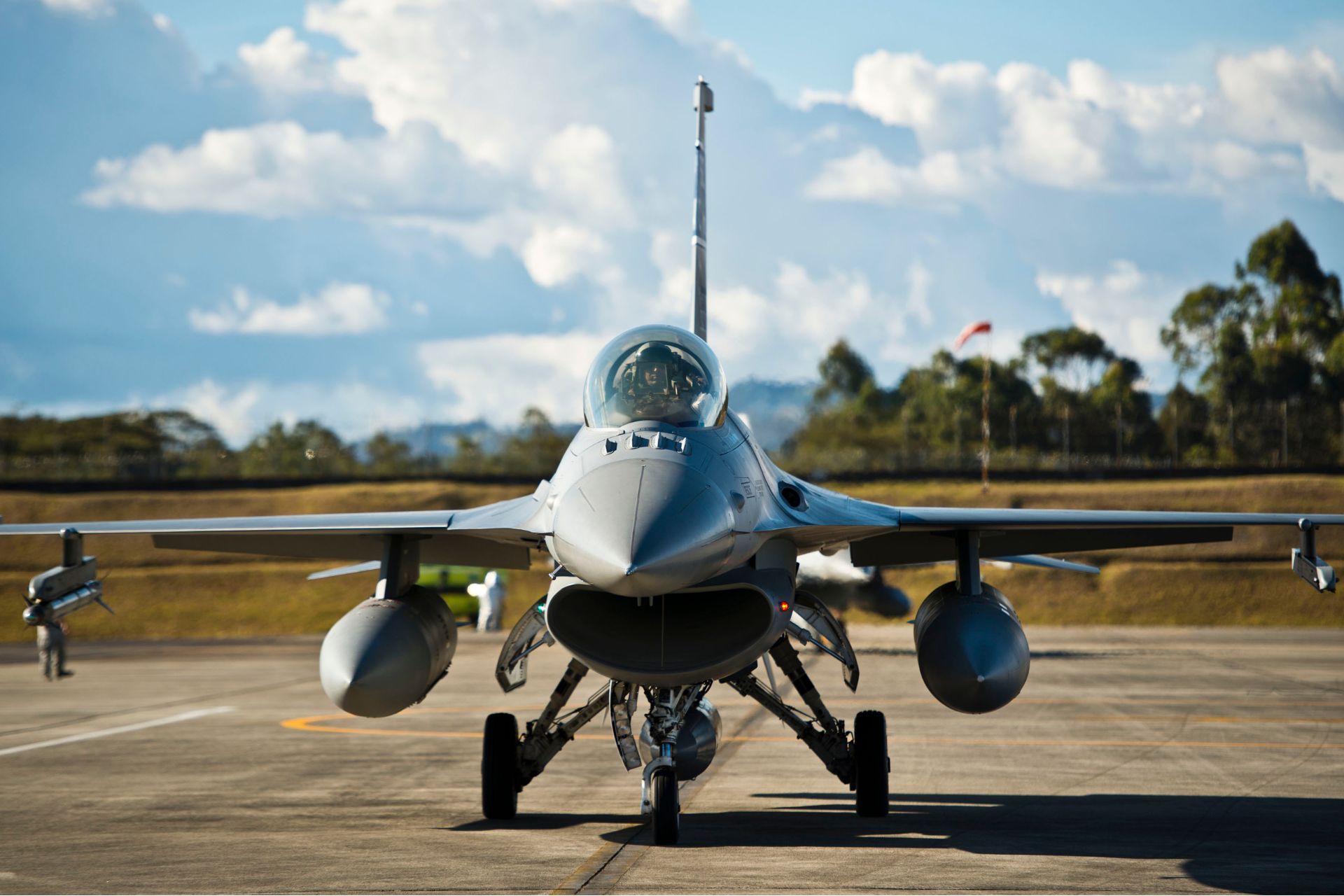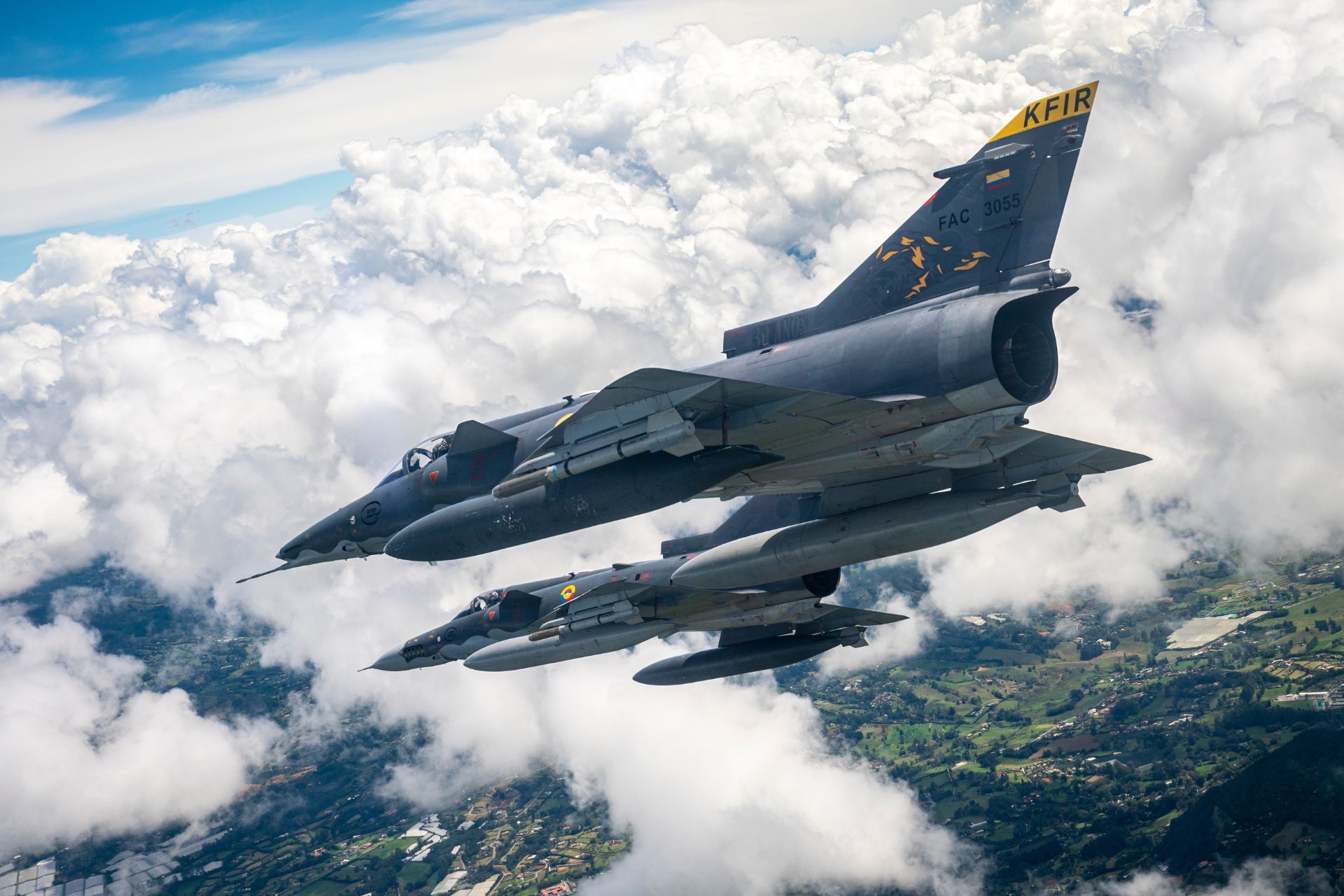Breaking News
US Proposes F-16s to Replace Colombia’s Israeli Kfir Jets.
Negotiations are intensifying between Colombia and several nations to decide on the replacement of the Colombian Air Force’s (FAC) Kfir fighter jets. Among the offers under review, the United States proposal, reported by Blu Radio, has garnered particular attention. It includes the purchase of eight used F-16 Fighting Falcon aircraft, upgraded with a Mid-Life Upgrade, currently available in a third country. These aircraft, manufactured by Lockheed Martin, would cost approximately $45 million each.

The US proposal includes establishing a dedicated logistics, maintenance, and training center for the F-16s at the Palanquero military base, which would enhance Colombia’s local capacity to manage and operate the aircraft effectively (Picture source: US DoD)
The comprehensive U.S. offer, still being finalized, represents an investment estimated at $600 million, equivalent to about 2.5 trillion Colombian pesos. This amount includes not only the aircraft but also a complete suite of services: modernization of the planes, pilot training, maintenance, spare parts, flight simulators, precision equipment, and ground support systems. Additionally, the U.S. proposal includes establishing a dedicated logistics, maintenance, and training center for the F-16s at the Palanquero military base, which would enhance Colombia’s local capacity to manage and operate the aircraft effectively.
The F-16 Fighting Falcon is a versatile and compact fighter jet, designed for both air-to-air and air-to-ground missions. Renowned for its agility, it can detect and engage targets in all weather conditions, including at low altitudes in radar-cluttered environments. Its fly-by-wire control system provides exceptional precision and responsiveness in combat, supported by advanced features such as integrated inertial and GPS navigation, UHF/VHF radios, and modular electronic countermeasures. With a maximum speed of Mach 2 and a range exceeding 3,200 kilometers with external tanks, it excels in long-range missions, precision strikes, and beyond-visual-range interceptions.
In terms of armament, the F-16 is equipped with a 20mm M-61A1 rotary cannon and external stations capable of carrying up to six air-to-air missiles, guided bombs, or air-to-ground munitions. Its payload includes two 2,000-pound bombs, AIM-9 and AIM-120 missiles, and external fuel tanks. The aircraft can endure up to nine times the force of gravity in combat, ensuring optimal performance under high stress. Reliable and cost-effective, the F-16 remains a key strategic asset globally, with a proven track record in major conflicts such as Desert Storm and operations in Afghanistan and Iraq.
A key element of this proposal is the U.S. government’s potential commitment to donating an additional 24 F-16 aircraft within the next five to ten years. This offer aims to significantly enhance the operational capabilities of the Colombian Air Force while strengthening bilateral strategic relations.

Introduced into the Colombian Air Force in the early 1990s, the Kfirs were initially acquired from the Israeli Defense Forces' surplus stock (Picture source: US DoD)
The Kfir, which means "Lion Cub" in Hebrew, is an aircraft developed by Israel Aircraft Industries (IAI). It combines the supersonic airframe of the French Dassault Mirage 5 with an Israeli version of the American General Electric J79 turbojet engine. Introduced into the Colombian Air Force in the early 1990s, the Kfirs were initially acquired from the Israeli Defense Forces' surplus stock. Since then, they have undergone various upgrades to meet modern battlefield demands, primarily for counterinsurgency and ground-attack missions.
Moreover, President Gustavo Petro’s administration is seeking to maximize Colombia’s benefits from this negotiation, particularly through industrial and social offsets. Among the priorities are investments in improving healthcare infrastructure, with resources allocated to upgrading hospitals in various regions of Colombia. This approach highlights a dual focus on national development alongside military modernization.
This U.S. proposal, coupled with support infrastructure and an ambitious offset strategy, represents a crucial step for Colombia in its efforts to modernize its air force. The initiative also reflects the broader efforts of both nations to consolidate their strategic partnership and strengthen military and industrial cooperation in a mutually beneficial manner.
The acquisition of F-16s would significantly bolster Colombia’s air defense capabilities. These multirole aircraft, recognized for their agility and versatility, would enable the Colombian Air Force to perform a wide range of missions, from air superiority to precision strikes. Additionally, the integration of advanced technology would enhance interoperability with allied forces, particularly the United States, facilitating joint operations and strategic information-sharing.
Over decades, Colombia has been considered a key U.S. partner in Latin America. The two countries share common interests in regional security, counter-narcotics operations, and promoting democracy. The acquisition of F-16s aligns with this dynamic, strengthening military and strategic ties while contributing to the modernization of Colombia’s armed forces.


























